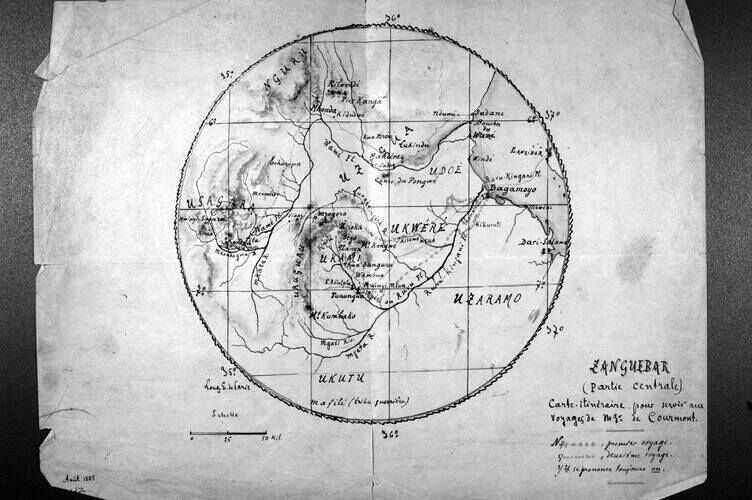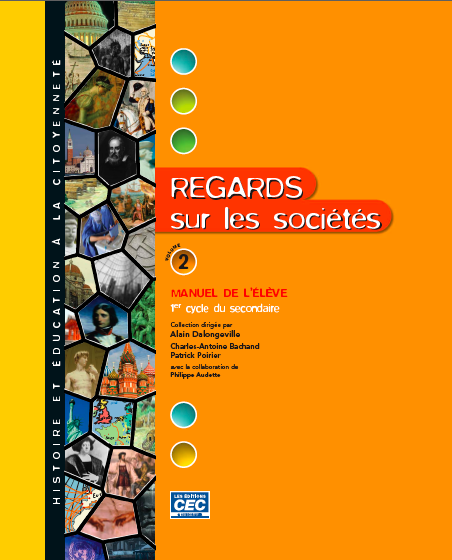When we talk about a historical source, we are simply talking about a document or artifact that we use to study history.
We can find various types of historical documents:
-
Archeological documents (weapons, tools, jewelry, remains, pottery, etc.)
-
Written documents (newspapers, books, registries, etc.)
-
Iconographic documents (engravings, statues, portraits, drawings, caricatures, etc.)
-
Audiovisual documents (cassette recording of an interview, reporting, documentaries, etc.)
Despite the fact that valuable information can be contained in a variety of historical documents, historians believe that written sources reveal the most about the past. The invention of writing marks the beginning of History, distinguishing it from Prehistory. A great number of documents and objects have been preserved since the invention of writing. They are stored in museums, libraries and universities throughout the world. Historians and researchers use these documents to help them understand how people lived in the past, how societies and civilizations worked.
Using these many documents, we can define two classifications: those described as eyewitness documents (also called primary sources) and those described as indirect sources (also called secondary sources). A primary source document is a document that was created at the time of the event we wish to study, or shortly thereafter.
If we were studying the Second World War, we would consider a well-preserved page from a newspaper printed at the time of the war, found in the archives of a library, to be a primary source. This newspaper page is a primary source.
We usually recognize a primary source when the person who wrote or created the document (newspaper, book, etc.) was a direct witness to the scene or event. We can get a good idea of this from the publication dates of documents.
The journalist who wrote the 1940 article we found about the Second World War was a direct witness to that war. He described what he saw. Another good example is the travel diary of a Jesuit missionary. We can learn much about the beginnings of the colony in New France from such a document.
Here are some primary sources:
- Newspapers, magazines;
- Letters, correspondence;
- Photographs;
- Films and videos;
- Works of art (books, sculptures or paintings) that directly depict events;
- Original sound recordings.

Original map of West Africa, drawn by Père Le Roy in 1888
An indirect source, or secondary source, is a document that analyzes primary sources. This category includes the writings of historians or researchers who analyzed or commented on newspapers, letters and works of art.
To add to the newspaper article from 1940 that discusses the Second World War, I could search the library for history textbooks written by historians. Although they did not directly observe the war or events, historians analyzed them.
These historians were perhaps not present during the Second World War, but they reported what the journalist saw in 1940 in their textbooks. This means that a history textbook is a secondary source.
Here are some secondary sources:
-
History textbooks
-
Biographies
-
Journalism, films recounting a part of history
-
Works of art from our era depicting or recounting a part of history

History textbook used by students in Quebec in 2007. Authors: A. Dalongeville, C-A. Bachand, P. Poirier
Because we have such an abundance of historical documents and of different sources, we must pay careful attention when analyzing a document. You can increase the success of your analysis by asking yourself the following questions: Who? When? What? Why? Where? How? (The 5W+H). Then, confirm whether or not your document(s) are primary sources or secondary sources:
Primary:
-
The document was created at the time of the event, or soon after it.
-
The document was created by someone who saw the event or who lived at exactly the same time (eyewitness).
-
The document is rare today.
Secondary:
-
The document was created well after the event.
-
The document uses examples from a primary source.
-
The document states an opinion about past events.